Having traded off my D50 for a Sigma 10-20mm f/4-5.6 UWA lens, I was without a body for close to 2 weeks and I already felt the need to get a new one, especially when tempted by the recent good skies. My D50 had served me well for the past 5 months, spent 22,000 shutters, accompanied me to Punggol and even Cambodia. It sure taught me plenty about DSLR photography. During this period, I also discovered that apart from the photography aspect, I took great pleasure in the 'Digital Darkroom' (editing).
A Reason to Upgrade
I compensated the lack of a good telephoto lens and 'one-hit-one-kill' shoots, by doing lots of editing. Hence, I did quite a bit of cropping. I loved rich colours, something that is hard to deliver off the Nikon camera. Hence, I had to resort to post-processing in softwares.
The above reasons made me realise the limitations of my D50. I discovered that I needed more megapixels.
I was always frustrated when I cannot shoot at the aperture that I want, under low light conditions, without having to compensate quality by setting a high ISO. The limitation of D50 is the ISO settings are only available at 200, 400, 800, 1600. Sometimes, I would rather compensate the quality to be able to capture the scene without any blur, hence I need something higher ISO and better noise control.
With all the reasons telling me to upgrade, I knew immediately, the models that I will consider for my upgrade. The three models that came into picture are Nikon D80, Nikon D200 and Fujifilm FinePix S5Pro.
About Fujifilm S5Pro
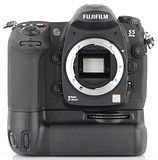
The S5Pro is built based on the D200 body and specification, except that it uses its famous Super CCD SR Pro sensor. The unique sensor consists of 12 million paired photodiodes - 6.17 million 'large' S photo diodes and 6.17 million 'small' R photo diodes. This technology creates a very broad dynamic range, with improved noise/signal ratio and a high quality colour reproduction. The dynamic range is so broad, that every single detail that is over or underexposed due to tricky senarios, is being preserved and reproduced as 'how our eyes sees it". Nevertheless, the output resolution is still 6 megapixel but at a whopping 10MB file size. The S5Pro also introduced a neat feature that allows user to do a live view for 30 sec before capturing the shot, making this DSLR like a PNS, definitely very useful. However, the drawback is that it definitely sucks the gas out of the cells. S5Pro has similar power management as D200, both inferior to D80 (by 3x) due to its more processing power. The batteries and quick charger looked similar as well, but they are proprietary and definitely not interchangeable. S5Pro is the latest DSLR compared to D80 and D200. Since D200 is already a semi-professional DSLR, the S5Pro is also among that class. Hence the price of the S5Pro is about a solid S$500 more than that of the D200. Apart from the fact that the sensor being the best sensor around and excellent noise control. I really don't see the point of spending the extra buck for it. It answered only one of my reason for upgrading, better noise control.
About Nikon D80

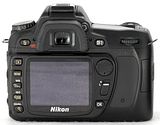
One of the recent DLSR from Nikon is the D80. From the model number, it is known that it belongs to the entry-level category. However, the D80 is no amateur DSLR! With its specifications, it should be classified as a serious amateur, a level below the semi-professional D200. Bearing a similar 10MP CCD sensor as D200, it is the flagship entry-level to bear the new 10MP sensor. Following that came the D40x, also bearing the same 10MP CCD sensor. This is a clear move for Nikon to move their DSLRs to the 10MP family, leaving behind the earlier 6MP (D40/D50/D70/D70s/D100). However, the D80 image processing engine performs with a 2-channels readout instead of the 4-channels in that of D200. The D80 follows the D200 closely in terms of specifications in many ways as well, other than the sensor. The AF system is also similar to the D200, both using the Multi-CAM 1000. The system features 11 AF areas, however, lacking the option to selecting it as 7 Wide as in D200. The maximum shutter speed is at 1/4000 compared to 1/8000 as in D70s and D200. The D80 also bears the same large and bright pentaprism viewfinder as D200, allowing a x0.94 magnification. D80 also incorporates the use of the intelligent battery, EN-EL3e. The EN-EL3e visually differs from the earlier EN-EL3 by only the extra contact between the earlier 2. Internally, the EN-EL3e has a micro-chip that allows communication with the camera body (D80 and D200), thus the camera is able to read out the amount of power left, the number of shots shot since the full charge and the deterioration rate of the battery (1-4), suggesting when a replacement is necessary. Like the D200, D80 also has its own dedicted vertical/battery grip, MB-D80. The noise control is similar for both D80 and D200. The D80 2.5 inch LCD display is also the same as D200, allowing a wider viewing angle than the rest. Although D80 is said to be a successor to D70s due to many similar physical features, but D80 decided to adopt the SD (Secure Digital) card as the choice of storage instead of the CF (compact flash) card, like the D50. I really liked SD cards, due to the cheap price. That was also the reason why I have selected D50 over D70s earlier. However, D50 only supports up to 2GB while D80 supports SHDC (Secure Digital High Capacity, above 4GB). Another similarity to D50 is that D80 has a 420-pixel RGB sensor for metering, as compared to the 1,008-pixel CCD sensor on D70s and D200. Like the D40/D40x, D80 has a retouching menu with a couple of functions that can reduce the post-processing work needed in photoshop. A useful feature is the D-lighting. However, it is always better to capture the image as it is and decide on whether to do any editing/enhancements on the computer.
About Nikon D200
There was D100 and now D200. D200 was announced in late 2005 and is presently still regarded as the best semi-professional DSLR ever. Having said earlier, the D200 has a 10MP sensor with a 4-channel processing engine, 1005-pixel CCD metering sensor, Multi-CAM 1000 AF system with 11/7 AF areas, maximum shutter speed of 1/8000, 2.5-inch LCD display, MB-D200 dedicated grip. The D200 is made of a very robust built with magnesium alloy frame with unique seam sealings to make the body weatherproof. The unique tight shutter unit has been tested to last for more than 100,000 shutter counts.

Decision Making: D80 or D200?
During the time of scouting for a body, I was very patient and waiting only for the best deal. In the retail outlets, D200 body is priced around S$2195 while D80 body is priced at S$1440 (prices quoted from MS Color). In the second hand market, the price is very much dependent on the condition and age of the camera, D200 being around S$1600 (body) - S$2000 (body with MB-D200 grip), D80 being around S$1150.
My intention was clear, to get a second and never a first hand. My criterias were clear too, to get 10MP and better noise control than my earlier D50. Any improvements over the D50 will be a plus. I narrowed down to the three models discussed earlier. S5Pro was the first to be eliminated from the race, due to its price and since I do a lot of post-processing in Photoshop, I do not require 'print perfect' pictures off the camera attributed by its excellent sensor. I decided to stay faithful to Nikon and only considered D80 and D200. I had a budget for both. Though if I spend lesser on a D80 body, I can use the remainder to buy myself a good flash unit (eg. SB800, ~S$640) and vertical/battery grip to make my setup almost complete. I would anytime recommend the D80 to anyone who feels the D200 price a sensitive question.
Into the second week without a body, I opened a thread asking for D80 or D200 offers. The thread was rather stagnant for the first few days. I was thinking, "Where was the selling of second hand D200 trend that was dominant in the resale market a month ago!?" On Monday evening, a friendly guy, Alan, who later became an 'sms-pal' offered me his D80 body standard package (~6 months local warranty) at S$1250. I made an offer at S$1150 firm. We both took time to consider the deal. He was keen in getting a D200 since he felt that he prefered D200. He had earlier sold his D200 for the D80. I started to seek him for opinions for both models. We hit it off rather well.
On Wednesday (9th May 2007) morning, a chinese national guy offered to sell his few days old D200 (12 months local warranty, 2GB Ultra II SD card, Lowepro EX180) at S$2130. I made a ridiculous offer of S$2000, since I was leaning towards the side of D80. I immediately let Alan know about this deal. He sold it later at S$2100 and Alan did not win the deal.
On the same day, in the afternoon, came a call asking if I was interested in a mint D200 parallel import set with 3 months shop warranty asking for S$1850. Mr. Poon, the seller, was enthusiastically willing to let me view it immediately, making me skeptical about the offer. Nevertheless, I agreed to meet Mr. Poon at Rochester Park, opposite my workplace after work. Shortly after, an SMS came asking if I was keen in a D200 with grip and spare battery (left with 3 months local warranty, a few thousand shutter count) asking for S$2050. I agreed to meet him at AMK Avenue 3, near my residence, to view the camera. I went ahead to meet Mr. Poon at Rochester Park. I then received a call offering a D80 (5 months local warranty, shutter count 3,000) asking for S$1350, and a D200 (3 months shop warranty, 25,000 shutter counts) asking for S$1650. I turned down both immediately because they were not as attactive as the deal that Mr. Poon is offering me. What about this deal?
Apparantly, Mr. Poon had earlier bought an Olympus E330 (unique for its 'live-view' mode) from John 3:16. He later felt that he wanted a Nikon D80. So he went back to John 3:16 and got himself a trade (that is why people visits John 3:16). He later realised that he wanted something more powerful than D80. However, John 3:16 refused a second trade, so he went around Funan to scout for shops that take trade-ins. He found P&G Photographic Pte Ltd, which is an old timer shop in Peninsula Shopping Centre and specialise in second-hand cameras and repairs. P&G decided to take in his D80 and he top up for a D200. Mr. Poon insisted a mint set, so the owner offered him this parallel import set from Japan.
The condition of the golden box is pristine and even the corners were sharp. The camera looked and felt very mint. The dials were tight and the LCD displays and BM-3 screen protector were scratchless. After a few trial shots with his Tamron 17-50 f/2.8. The battery went flat! I could not test more. Mr. Poon claimed that the camera has a shutter count of less than 100. I took his word for it, since the receipt showed 3rd of May 2007. The receipt clearly indicated the purchase date, the details of the trade with serial numbers and 3 months shop warranty. The reason for giving the shop warranty is that parallel import sets or cameras bought outside Singapore are not covered for the standard one year warranty (only lenses are). Hence, if I ever bring this body to Nikon Service Center in Singapore, I will have to pay full service price as if the warranty has expired. I was having second thoughts as I regarded this set as having no warranty. Mr. Poon reassured me by lowering his asking price to S$1800. I was telling myself that, "Damn! This camera is really brand new! Even without the warranty and proper English manual, or if I get a China set from Orient Photo, the price is still fantastic. I can just download the manual from the net, print and bind it nicely from a laser printer. How can I not trust Japan retail sets!" I beated around the bush and the warranty and not being able to test it further. I asked him the reason for selling and he said that he wanted to change to a Canon system where there is a programmed or auto mode. He is not advanced enough to use manual modes. His subjects are mainly people. He suggested that we take our time to think it over, while I should look around other sets and he can meet other potential buyers. My brain started working! I thought that nothing can come as close to a brand new camera at more than 80% of the retail street price (not taking warranty into consideration). I made an offer to lower the price further with immediate cash payment. After some thoughts, Mr. Poon agreed as he expressed that he was not keen in playing the trading game and just want to get cash and move on. Looking at the huge SUV he drove, he should be rather well-off to fret about a mere few hundred bucks. So we closed the deal and I managed to keep the 512MB CF card in the camera (that was not part of the negotiation)!
I AM NO LONGER BODYLESS!
I am back in the game again!
The Nikon D200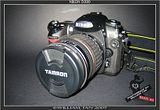

D200 mounted with Tamron 17-55 f/2.8
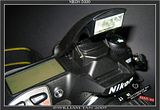
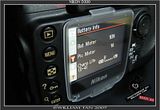
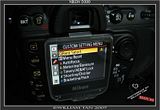
Close-ups of the pop-up flash being mint and colourless (no signs of regular firing), the LCD and screen protector. A neat feature is that the body detects the amount of juice left in the battery and the physical lifespan of the battery (deterioration meter) before a replacement is required, all attributed to the microchip in the EN-EL3e battery.
technorati tagsPhotography Camera digital SLR DLSR Nikon D200
A Reason to Upgrade
I compensated the lack of a good telephoto lens and 'one-hit-one-kill' shoots, by doing lots of editing. Hence, I did quite a bit of cropping. I loved rich colours, something that is hard to deliver off the Nikon camera. Hence, I had to resort to post-processing in softwares.
The above reasons made me realise the limitations of my D50. I discovered that I needed more megapixels.
I was always frustrated when I cannot shoot at the aperture that I want, under low light conditions, without having to compensate quality by setting a high ISO. The limitation of D50 is the ISO settings are only available at 200, 400, 800, 1600. Sometimes, I would rather compensate the quality to be able to capture the scene without any blur, hence I need something higher ISO and better noise control.
With all the reasons telling me to upgrade, I knew immediately, the models that I will consider for my upgrade. The three models that came into picture are Nikon D80, Nikon D200 and Fujifilm FinePix S5Pro.
About Fujifilm S5Pro

The S5Pro is built based on the D200 body and specification, except that it uses its famous Super CCD SR Pro sensor. The unique sensor consists of 12 million paired photodiodes - 6.17 million 'large' S photo diodes and 6.17 million 'small' R photo diodes. This technology creates a very broad dynamic range, with improved noise/signal ratio and a high quality colour reproduction. The dynamic range is so broad, that every single detail that is over or underexposed due to tricky senarios, is being preserved and reproduced as 'how our eyes sees it". Nevertheless, the output resolution is still 6 megapixel but at a whopping 10MB file size. The S5Pro also introduced a neat feature that allows user to do a live view for 30 sec before capturing the shot, making this DSLR like a PNS, definitely very useful. However, the drawback is that it definitely sucks the gas out of the cells. S5Pro has similar power management as D200, both inferior to D80 (by 3x) due to its more processing power. The batteries and quick charger looked similar as well, but they are proprietary and definitely not interchangeable. S5Pro is the latest DSLR compared to D80 and D200. Since D200 is already a semi-professional DSLR, the S5Pro is also among that class. Hence the price of the S5Pro is about a solid S$500 more than that of the D200. Apart from the fact that the sensor being the best sensor around and excellent noise control. I really don't see the point of spending the extra buck for it. It answered only one of my reason for upgrading, better noise control.
About Nikon D80


One of the recent DLSR from Nikon is the D80. From the model number, it is known that it belongs to the entry-level category. However, the D80 is no amateur DSLR! With its specifications, it should be classified as a serious amateur, a level below the semi-professional D200. Bearing a similar 10MP CCD sensor as D200, it is the flagship entry-level to bear the new 10MP sensor. Following that came the D40x, also bearing the same 10MP CCD sensor. This is a clear move for Nikon to move their DSLRs to the 10MP family, leaving behind the earlier 6MP (D40/D50/D70/D70s/D100). However, the D80 image processing engine performs with a 2-channels readout instead of the 4-channels in that of D200. The D80 follows the D200 closely in terms of specifications in many ways as well, other than the sensor. The AF system is also similar to the D200, both using the Multi-CAM 1000. The system features 11 AF areas, however, lacking the option to selecting it as 7 Wide as in D200. The maximum shutter speed is at 1/4000 compared to 1/8000 as in D70s and D200. The D80 also bears the same large and bright pentaprism viewfinder as D200, allowing a x0.94 magnification. D80 also incorporates the use of the intelligent battery, EN-EL3e. The EN-EL3e visually differs from the earlier EN-EL3 by only the extra contact between the earlier 2. Internally, the EN-EL3e has a micro-chip that allows communication with the camera body (D80 and D200), thus the camera is able to read out the amount of power left, the number of shots shot since the full charge and the deterioration rate of the battery (1-4), suggesting when a replacement is necessary. Like the D200, D80 also has its own dedicted vertical/battery grip, MB-D80. The noise control is similar for both D80 and D200. The D80 2.5 inch LCD display is also the same as D200, allowing a wider viewing angle than the rest. Although D80 is said to be a successor to D70s due to many similar physical features, but D80 decided to adopt the SD (Secure Digital) card as the choice of storage instead of the CF (compact flash) card, like the D50. I really liked SD cards, due to the cheap price. That was also the reason why I have selected D50 over D70s earlier. However, D50 only supports up to 2GB while D80 supports SHDC (Secure Digital High Capacity, above 4GB). Another similarity to D50 is that D80 has a 420-pixel RGB sensor for metering, as compared to the 1,008-pixel CCD sensor on D70s and D200. Like the D40/D40x, D80 has a retouching menu with a couple of functions that can reduce the post-processing work needed in photoshop. A useful feature is the D-lighting. However, it is always better to capture the image as it is and decide on whether to do any editing/enhancements on the computer.
About Nikon D200
There was D100 and now D200. D200 was announced in late 2005 and is presently still regarded as the best semi-professional DSLR ever. Having said earlier, the D200 has a 10MP sensor with a 4-channel processing engine, 1005-pixel CCD metering sensor, Multi-CAM 1000 AF system with 11/7 AF areas, maximum shutter speed of 1/8000, 2.5-inch LCD display, MB-D200 dedicated grip. The D200 is made of a very robust built with magnesium alloy frame with unique seam sealings to make the body weatherproof. The unique tight shutter unit has been tested to last for more than 100,000 shutter counts.
So how else does D200 differ from D80?

Kent Rockwell served as a good source of reviews for Nikon DSLRs. I made use of his comparison of D80 vs D200 to help me in decision making.
Decision Making: D80 or D200?
During the time of scouting for a body, I was very patient and waiting only for the best deal. In the retail outlets, D200 body is priced around S$2195 while D80 body is priced at S$1440 (prices quoted from MS Color). In the second hand market, the price is very much dependent on the condition and age of the camera, D200 being around S$1600 (body) - S$2000 (body with MB-D200 grip), D80 being around S$1150.
My intention was clear, to get a second and never a first hand. My criterias were clear too, to get 10MP and better noise control than my earlier D50. Any improvements over the D50 will be a plus. I narrowed down to the three models discussed earlier. S5Pro was the first to be eliminated from the race, due to its price and since I do a lot of post-processing in Photoshop, I do not require 'print perfect' pictures off the camera attributed by its excellent sensor. I decided to stay faithful to Nikon and only considered D80 and D200. I had a budget for both. Though if I spend lesser on a D80 body, I can use the remainder to buy myself a good flash unit (eg. SB800, ~S$640) and vertical/battery grip to make my setup almost complete. I would anytime recommend the D80 to anyone who feels the D200 price a sensitive question.
- I loved the D80 because I can continue to make use of my existing SD cards instead of CF cards on the D200. SD cards are cheaper than CF cards. D80 is of the same size as my earlier D50 and the controls are rather identical, making the learning curve minimum. The D200 has more dedicated controls to make operation a swift, but it will take me a while to master it. D80 +1
- Though both models uses the good EN-EL3e battery, D80 gets more juice out of it compared to D200, by about 3x. The reason is that D200 fast processing capabilities and features all come with a price, battery juice. I was pampered by the good battery life from my D50, such that I never had to recharge so often. One full charge could last me a day to two of shooting and in standby mode most of the time. D80 +1
- I had earlier bought the wireless remote ML-L3 for a mere S$16. It served me well whenever I wanted to take self-portraits. However, the D200 does not support the ML-L3 and can the only form of remote is via shutter release cables such as the expensive MC-30. Another item to bulk up my load. D80 +1
- The price difference in the second-hand market made the gap between D80 and D200 very narrow (condition and age dependent). Furthermore, with the release of S5Pro, many D200 users are selling their bodies to fund a 'newer' version. Still D80 is at least a few hundred to a thousand bucks (condition and age dependent) cheaper. D80 +1
- Though D200 is slightly heavier than D80, the magnesium alloy frame has compensated for the weight. The built is much better with the D200 being sealed for weather-resistance. D200 +1
- I do not require a faster burst mode for now since I do not take sports. However, the 5fps of the D200 is still better than D80. D200 +1
- Though many claimed that the metering of both are identical. Some enthusiatic hobbyists have put both cameras to test and claimed that D80 produces underexposed images and requires to have the exposure compensation set a -0.7. However, I feel it should not bug me too much. D200 has spot-on accurate metering. D200 +1
- Though D200 may require a steeper learning curve, the additional functions that I have not tried before and the dedicated buttons are gonna make the phototaking experince a better one. D200 +1
- Tests have shown that the D200 shutter unit is able to last 100,000 or more releases. Though no actual tests were conducted on the D80, many suggests that all entry-level DSLRs (D40/D40x/D50/D70/D70s/D80) have an identical shutter unit. Some users of D70 had their shutters replaced at 10,000 releases while some have not even at 45,000. Others claimed that these basic shutters have an estimated 70,000 count life span. Nevertheless, replacement of a shutter unit is around S$200-300 (depending on model). Hence, it does not bug me too much. D200 + 1
- Of all things, materialistic factor plays a wicked role here. Holding a semi-professional D200 definitely looks better than an entry-level DSLR. Though I must stress that, 30% equipment and 70% photographer = good picture. D200 +1
The Offers
Before deciding on which model to buy, I left my options opened by hunting for D80 and D200. During the first week without my body, I found someone selling a D80 body. The condition is about 3,000 shutter counts, left with 3 months local warranty, body with grip and only one EN-EL3e (yes the grip works with just one battery as well), priced at S$1350. The seller later sold the grip while she was considering higher offers. So I made another offer of $1100 for the body. It was indeed a very low offer which I was certain she would not accept. Since I was in no hurry, I left the offer as it was. Meanwhile, she claimed that there is another keen party whom also offered the same. She came back to me a few days later agreeing to deal at S$1100 during last Sunday. However, she backed out with an offer at S$1150. I thought she was gonna play mind games with me all along, but in the end she sold it.Into the second week without a body, I opened a thread asking for D80 or D200 offers. The thread was rather stagnant for the first few days. I was thinking, "Where was the selling of second hand D200 trend that was dominant in the resale market a month ago!?" On Monday evening, a friendly guy, Alan, who later became an 'sms-pal' offered me his D80 body standard package (~6 months local warranty) at S$1250. I made an offer at S$1150 firm. We both took time to consider the deal. He was keen in getting a D200 since he felt that he prefered D200. He had earlier sold his D200 for the D80. I started to seek him for opinions for both models. We hit it off rather well.
On Wednesday (9th May 2007) morning, a chinese national guy offered to sell his few days old D200 (12 months local warranty, 2GB Ultra II SD card, Lowepro EX180) at S$2130. I made a ridiculous offer of S$2000, since I was leaning towards the side of D80. I immediately let Alan know about this deal. He sold it later at S$2100 and Alan did not win the deal.
On the same day, in the afternoon, came a call asking if I was interested in a mint D200 parallel import set with 3 months shop warranty asking for S$1850. Mr. Poon, the seller, was enthusiastically willing to let me view it immediately, making me skeptical about the offer. Nevertheless, I agreed to meet Mr. Poon at Rochester Park, opposite my workplace after work. Shortly after, an SMS came asking if I was keen in a D200 with grip and spare battery (left with 3 months local warranty, a few thousand shutter count) asking for S$2050. I agreed to meet him at AMK Avenue 3, near my residence, to view the camera. I went ahead to meet Mr. Poon at Rochester Park. I then received a call offering a D80 (5 months local warranty, shutter count 3,000) asking for S$1350, and a D200 (3 months shop warranty, 25,000 shutter counts) asking for S$1650. I turned down both immediately because they were not as attactive as the deal that Mr. Poon is offering me. What about this deal?
Apparantly, Mr. Poon had earlier bought an Olympus E330 (unique for its 'live-view' mode) from John 3:16. He later felt that he wanted a Nikon D80. So he went back to John 3:16 and got himself a trade (that is why people visits John 3:16). He later realised that he wanted something more powerful than D80. However, John 3:16 refused a second trade, so he went around Funan to scout for shops that take trade-ins. He found P&G Photographic Pte Ltd, which is an old timer shop in Peninsula Shopping Centre and specialise in second-hand cameras and repairs. P&G decided to take in his D80 and he top up for a D200. Mr. Poon insisted a mint set, so the owner offered him this parallel import set from Japan.
The condition of the golden box is pristine and even the corners were sharp. The camera looked and felt very mint. The dials were tight and the LCD displays and BM-3 screen protector were scratchless. After a few trial shots with his Tamron 17-50 f/2.8. The battery went flat! I could not test more. Mr. Poon claimed that the camera has a shutter count of less than 100. I took his word for it, since the receipt showed 3rd of May 2007. The receipt clearly indicated the purchase date, the details of the trade with serial numbers and 3 months shop warranty. The reason for giving the shop warranty is that parallel import sets or cameras bought outside Singapore are not covered for the standard one year warranty (only lenses are). Hence, if I ever bring this body to Nikon Service Center in Singapore, I will have to pay full service price as if the warranty has expired. I was having second thoughts as I regarded this set as having no warranty. Mr. Poon reassured me by lowering his asking price to S$1800. I was telling myself that, "Damn! This camera is really brand new! Even without the warranty and proper English manual, or if I get a China set from Orient Photo, the price is still fantastic. I can just download the manual from the net, print and bind it nicely from a laser printer. How can I not trust Japan retail sets!" I beated around the bush and the warranty and not being able to test it further. I asked him the reason for selling and he said that he wanted to change to a Canon system where there is a programmed or auto mode. He is not advanced enough to use manual modes. His subjects are mainly people. He suggested that we take our time to think it over, while I should look around other sets and he can meet other potential buyers. My brain started working! I thought that nothing can come as close to a brand new camera at more than 80% of the retail street price (not taking warranty into consideration). I made an offer to lower the price further with immediate cash payment. After some thoughts, Mr. Poon agreed as he expressed that he was not keen in playing the trading game and just want to get cash and move on. Looking at the huge SUV he drove, he should be rather well-off to fret about a mere few hundred bucks. So we closed the deal and I managed to keep the 512MB CF card in the camera (that was not part of the negotiation)!
I AM NO LONGER BODYLESS!
I am back in the game again!
The Nikon D200
The contents and the Japan local warranty. It sure looks differnt from the standard Nikon warranty with 3 copies of the same portion.
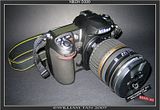
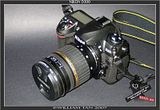
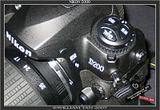








technorati tags
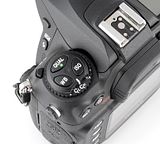
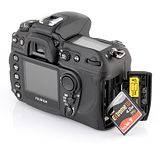
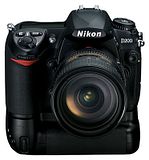
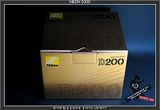
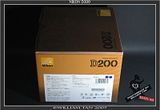
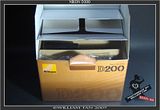
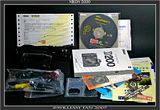
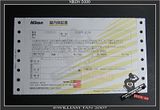
Comments
Nikon D200 demo at digital camera blog video